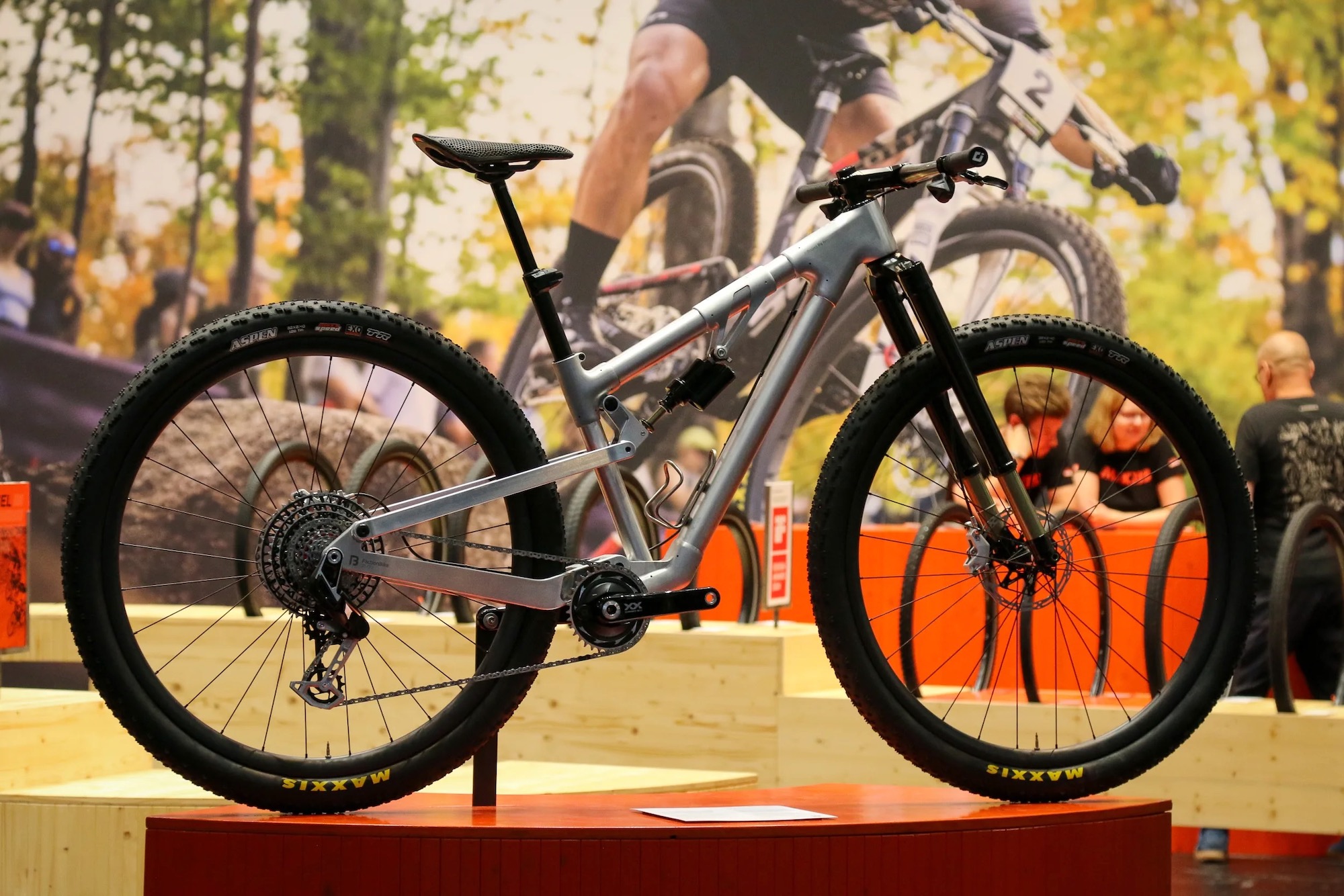Without a doubt, one of the biggest stories of 2025 is 32-inch wheels. We’ve been talking about them quite a bit ever since the Taipei Show, where Maxxis was showing off a production version of its Aspen XC tires in the 32-inch size. After that, it was as if the floodgates opened, and we’ve seen various production and prototype frames, handmade bikes, wheels, and other parts made specifically around the 32-inch wheel size. A few frame manufacturers and XC racing teams were even seen test riding 32-inch-wheeled bikes, and surely most others are designing and testing theirs behind the scenes.
But with all the hype that 32 has been getting, one thing that hasn’t been made clear is whether or not the bigger hoops would be allowed in World Cup XC races. As we know, the UCI makes rules about the gear that cyclists use in international competition, often imposing restrictions on things like handlebar width or gearing. And, until just recently, it was still unclear whether 32-inch wheels would be banned or allowed in UCI mountain bike racing.

Our friends at Mountain Bike Action were the first to report on the UCI’s decision to allow 32-inch wheels in competition. In that article, they quoted the UCI’s Communications and Media Relations Senior Manager, Fabrice Tiano, as saying, “The mountain bike commission always considered mountain bikes as the laboratory of cycling with very limited rules regarding equipment. That is the reason why 32-inch wheels will not be banned in mountain bikes.”
For further confirmation, I reached out to an acquaintance associated with the UCI. They told me, “32 is good to go. No restrictions on wheel size. MTB has always enjoyed the freedom of innovation. We have all benefitted from it.” They were also quick to mention that, “Of course, all of the safety measures and certifications are the same as other wheel sizes.”
The day after this piece was initially published, I also got a follow-up message from Charlotte at the UCI Press Office. She stated “that the use of 32” wheels is permitted, however, the UCI and the UCI Mountain Bike Commission are closely following the developments of the technology.” While it was not expressly stated in her message, I speculate that this means that the UCI will be paying close attention and potentially adjusting its stance on 32-inch wheels to ensure both fairness and rider safety.

So, essentially, XC teams and racers have the green light to race 32-inch-wheeled bikes in UCI-sanctioned MTB events next season. But the bikes will obviously need to be tested and receive all the applicable certifications to ensure the safety of all riders. So, we probably won’t see anybody racing chopped-up frankenbikes, but it’s fair to assume that quite a few frame manufacturers and teams will be testing and racing certified 32ers next season.
I know I’m excited, and I think it will be very interesting to see how this all plays out. It’s easy enough to speculate how 32-inch-wheeled bikes might perform and the advantages/disadvantages they could have on the race course. But now we’ll get to see firsthand as brands, teams, and racers take to the trails and go head-to-head with the current crop of 29-inch bikes. Will 32-inch wheels actually be the next big thing? Will they stick around or ultimately get banned for providing an unfair advantage? I guess we’re going to find out.
I also think it’s safe to assume that this announcement will only help accelerate the already rapid pace of 32-inch product development. In the coming months, I anticipate seeing numerous new production forks, frames, wheels, tires, stems, and other components for the 32-inch wheel size. We’ll be watching the market closely and will do our best to keep you updated with all the new gear.
